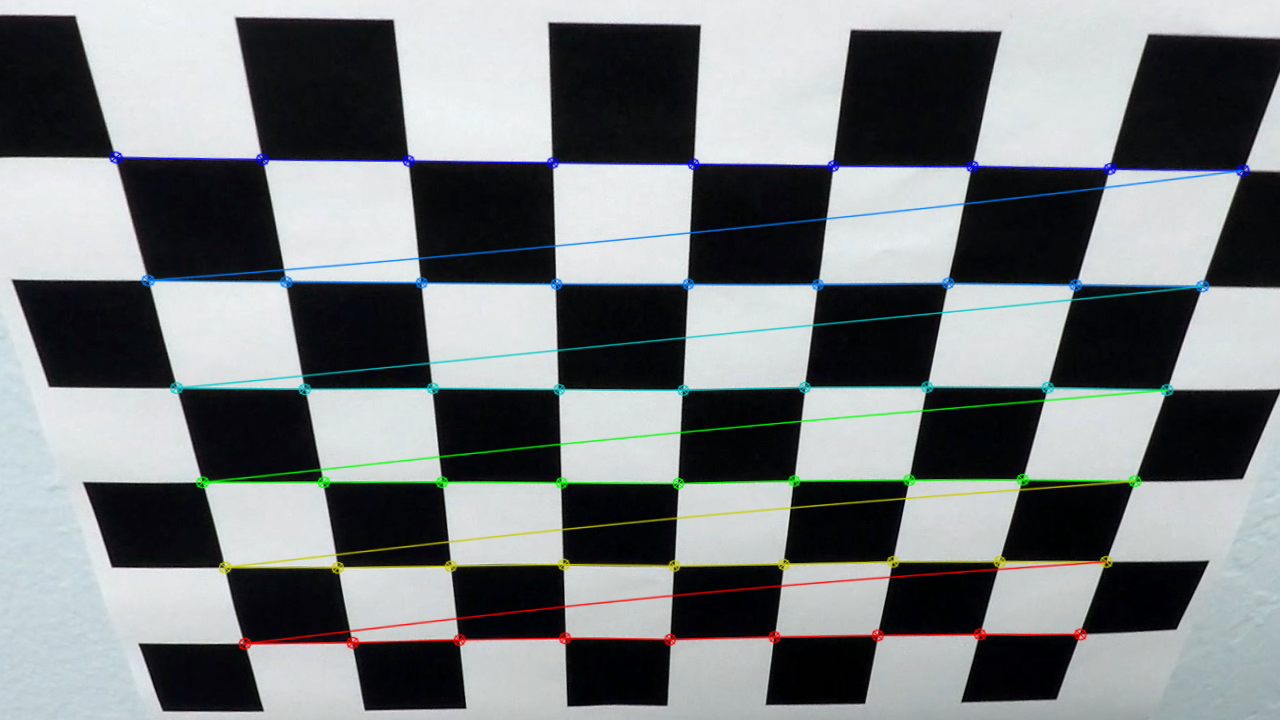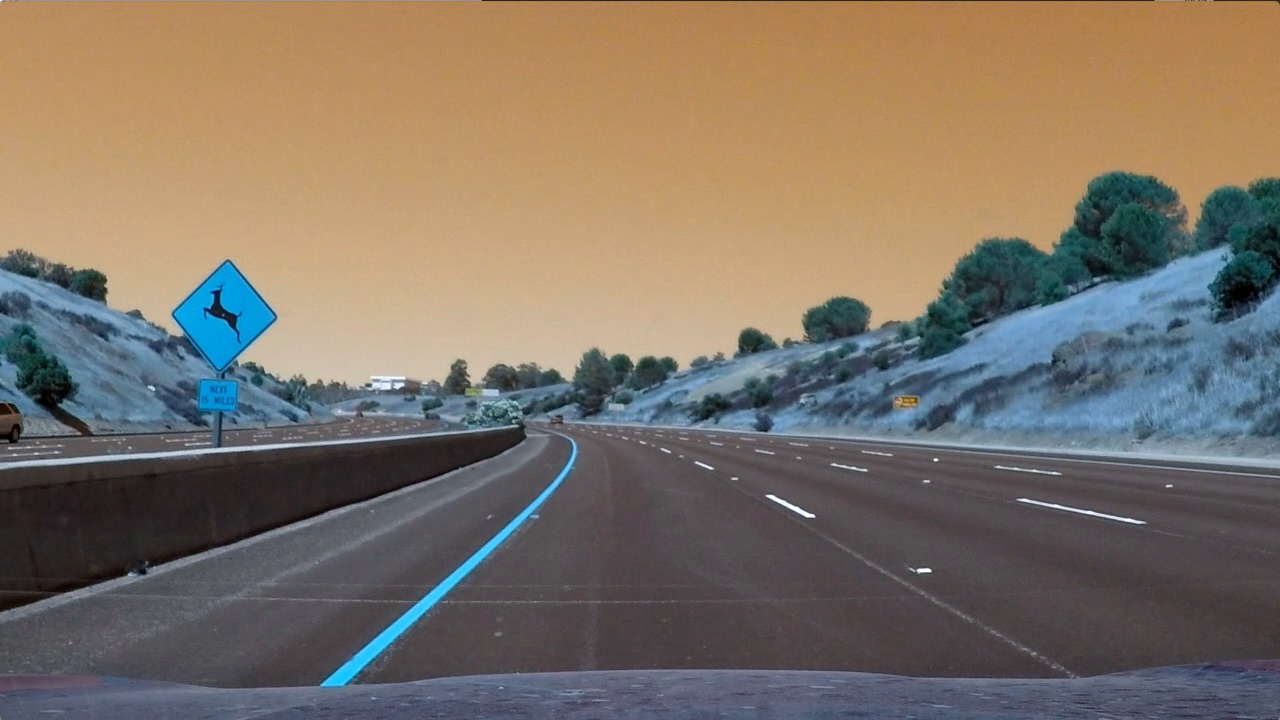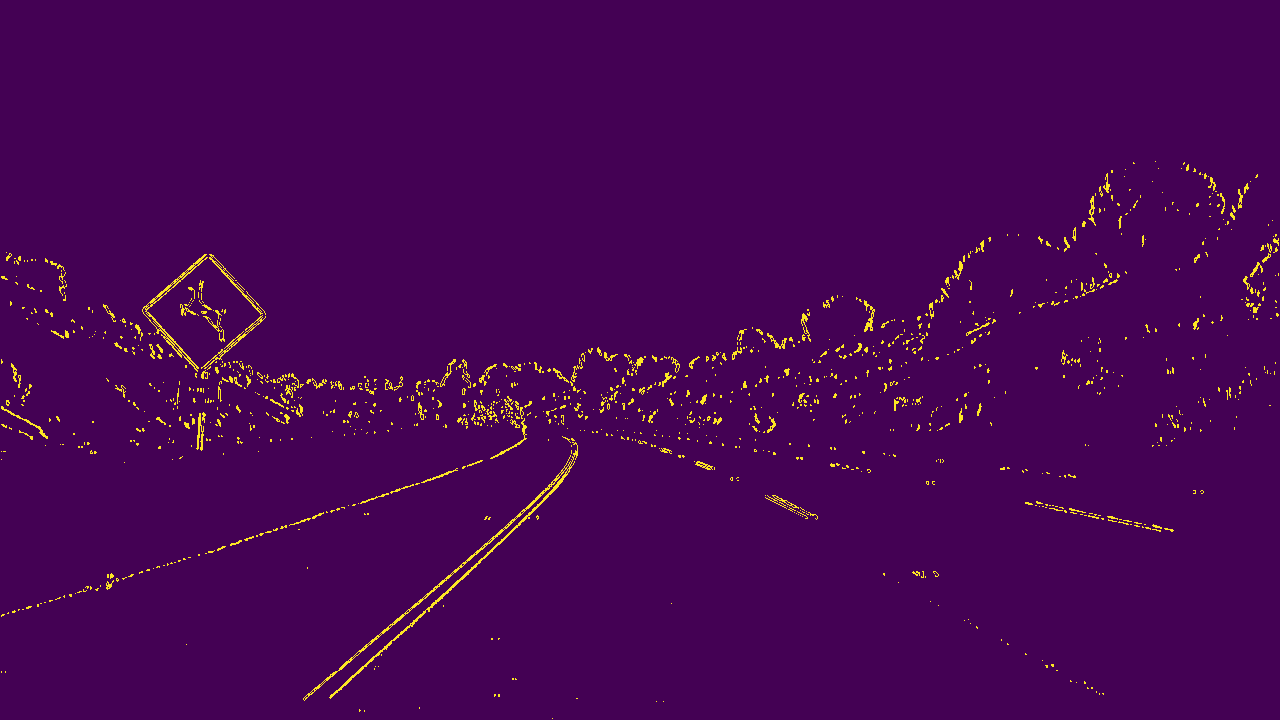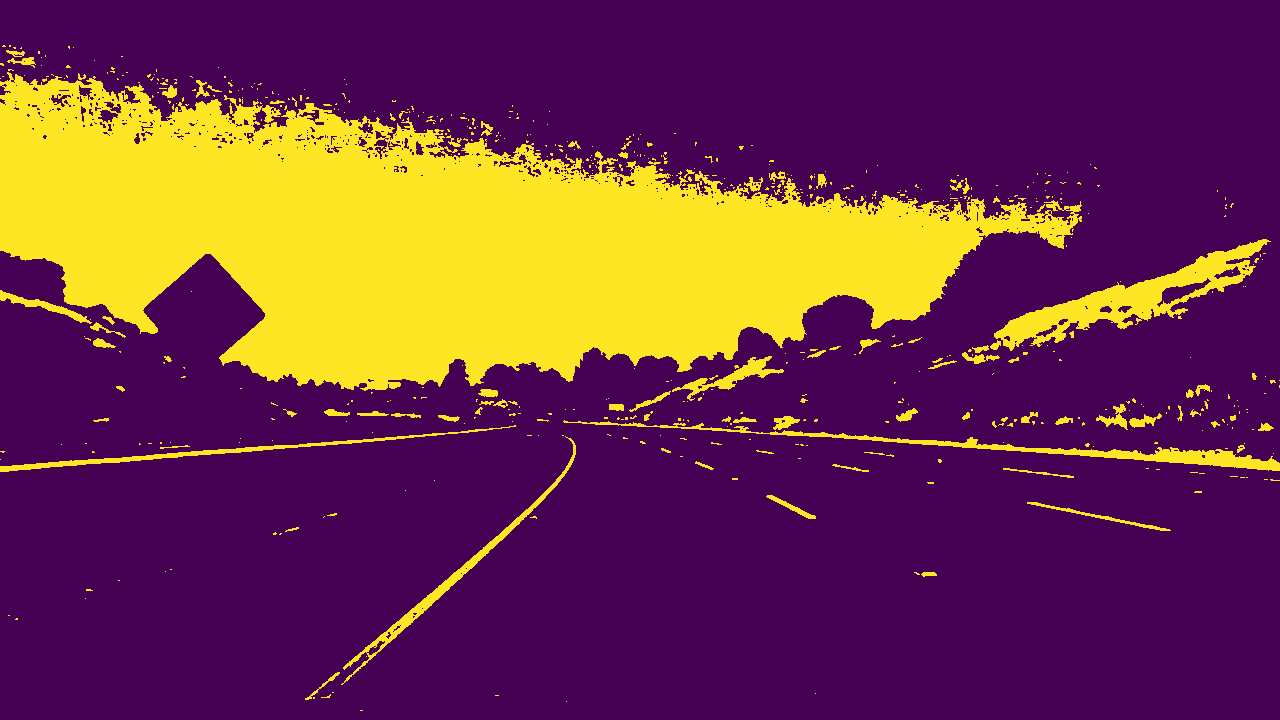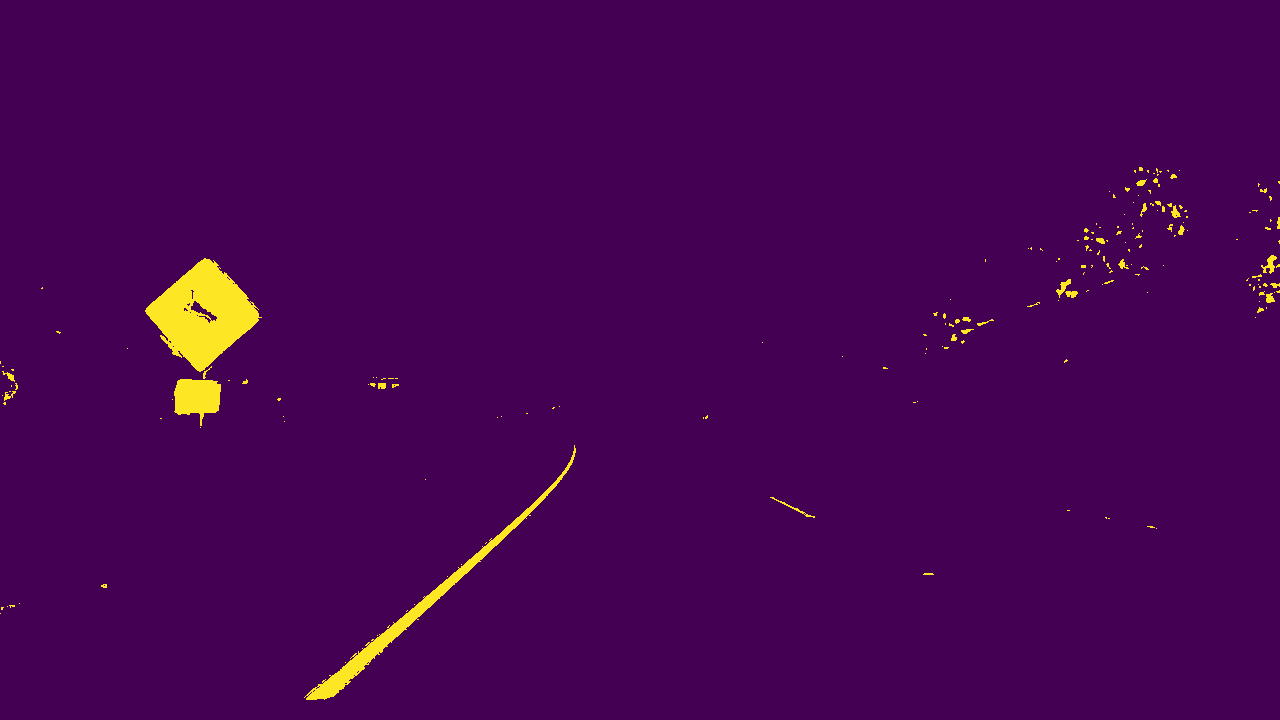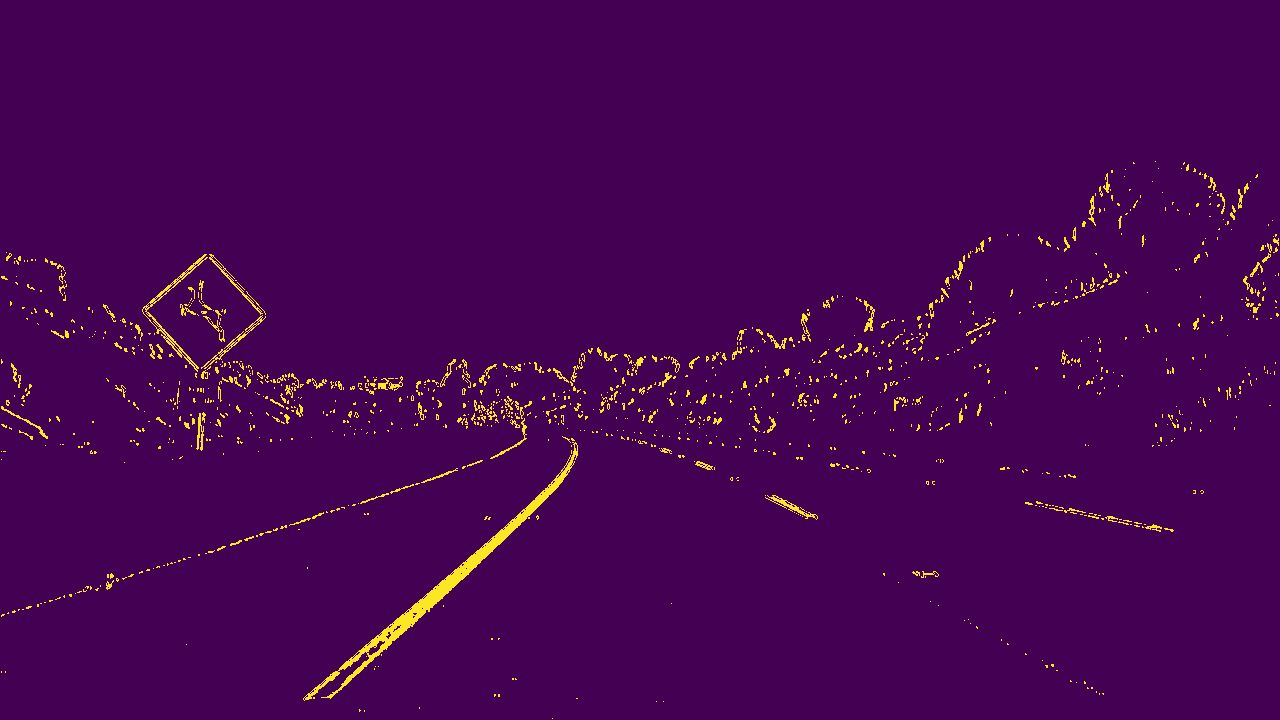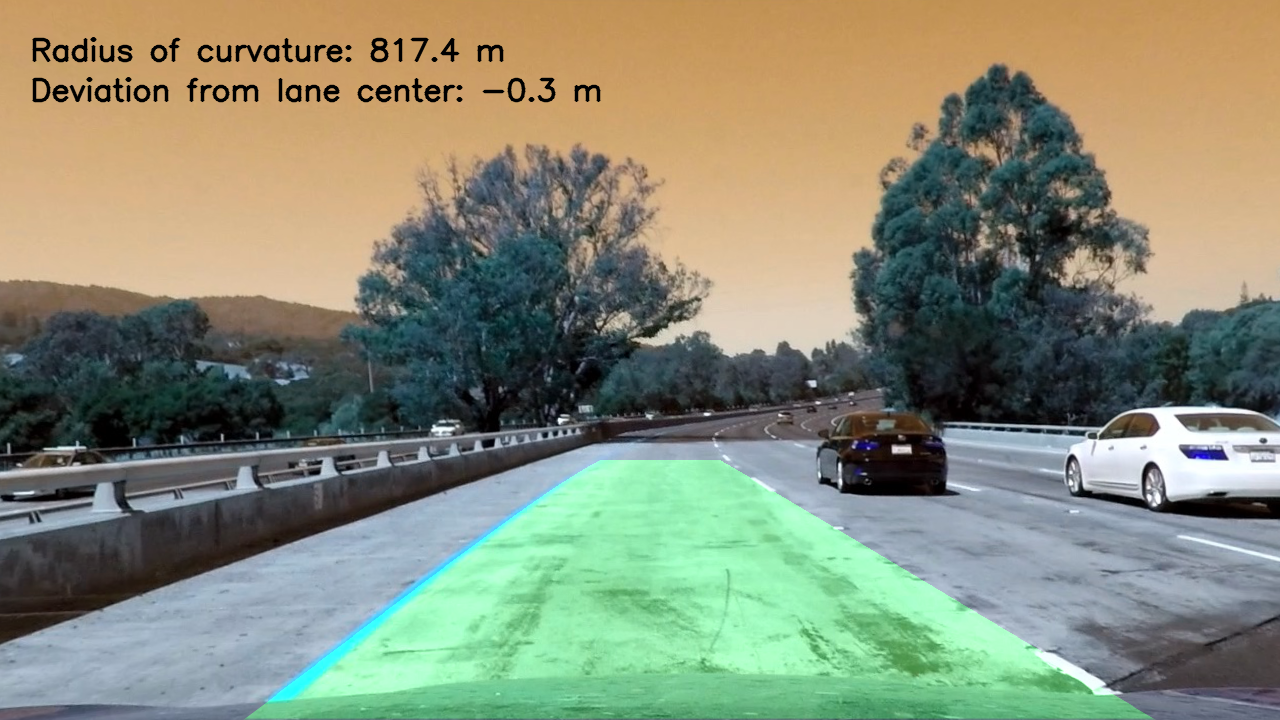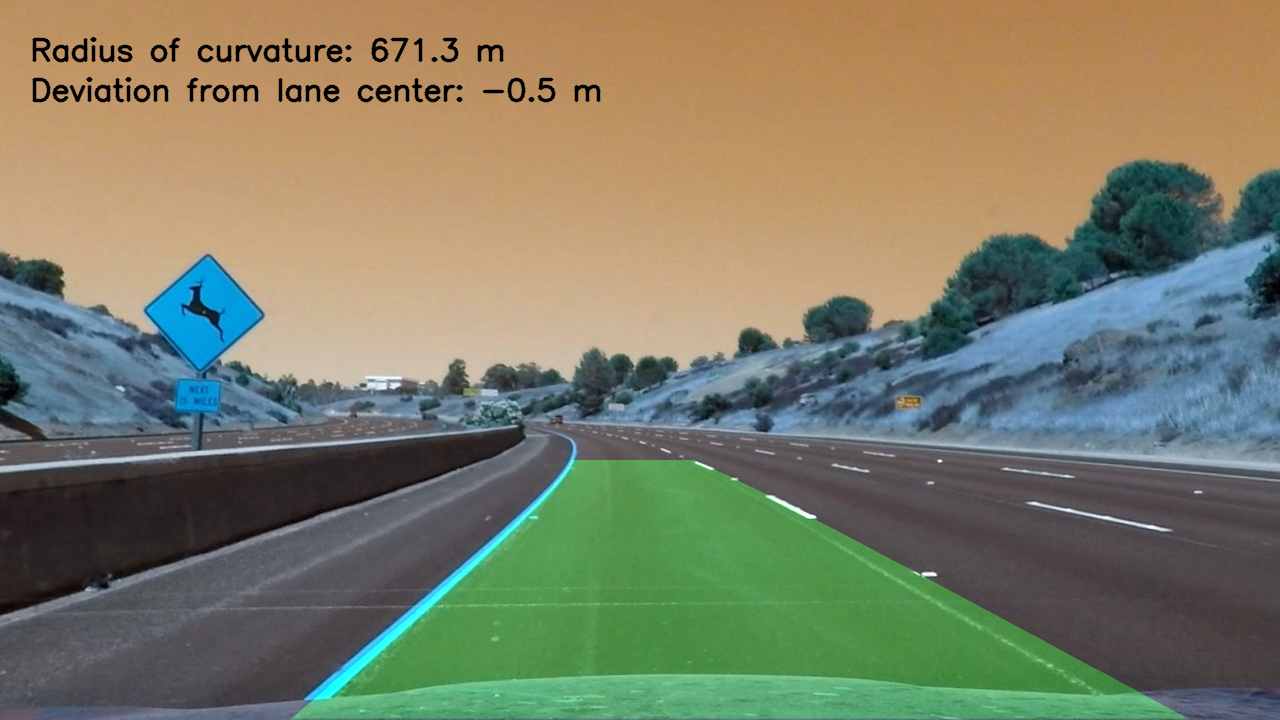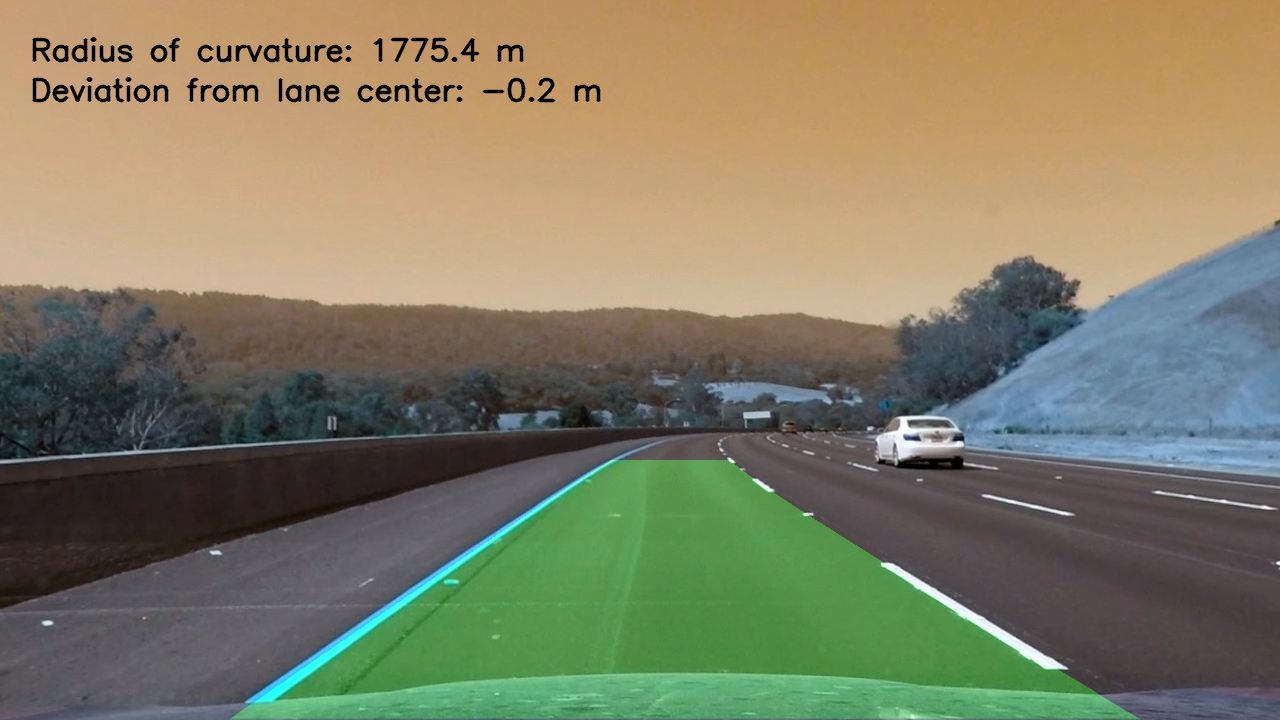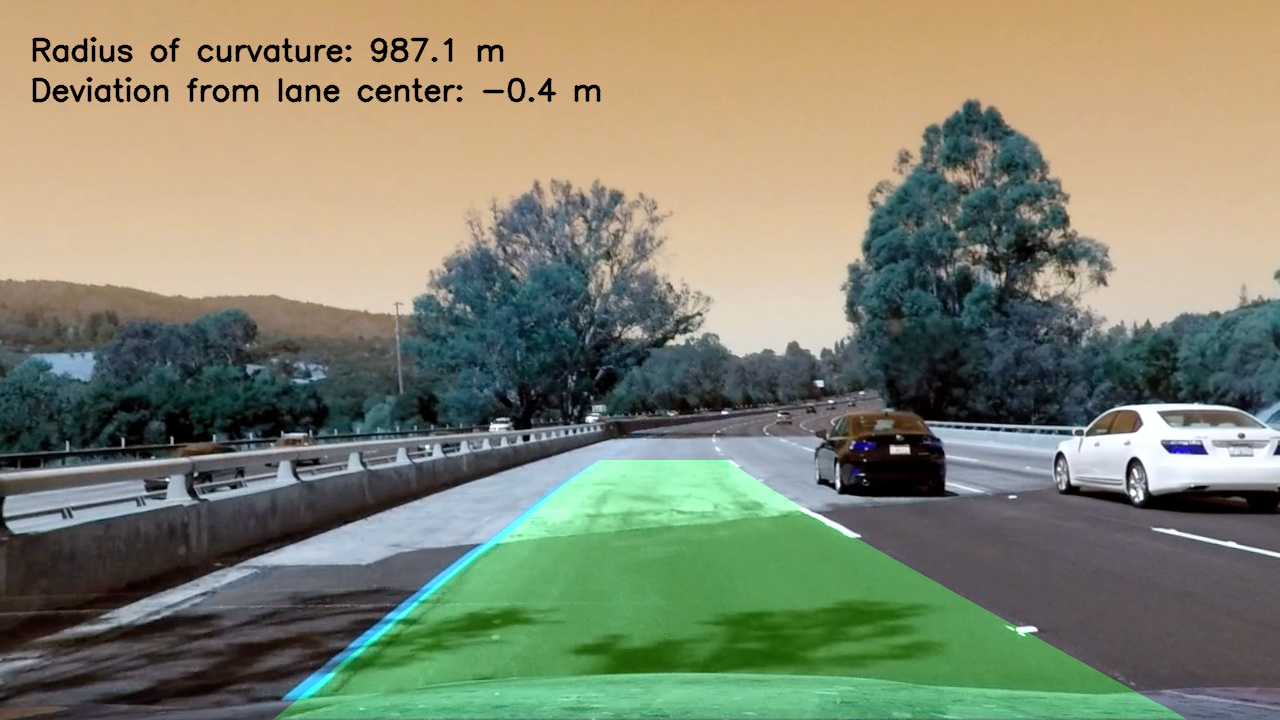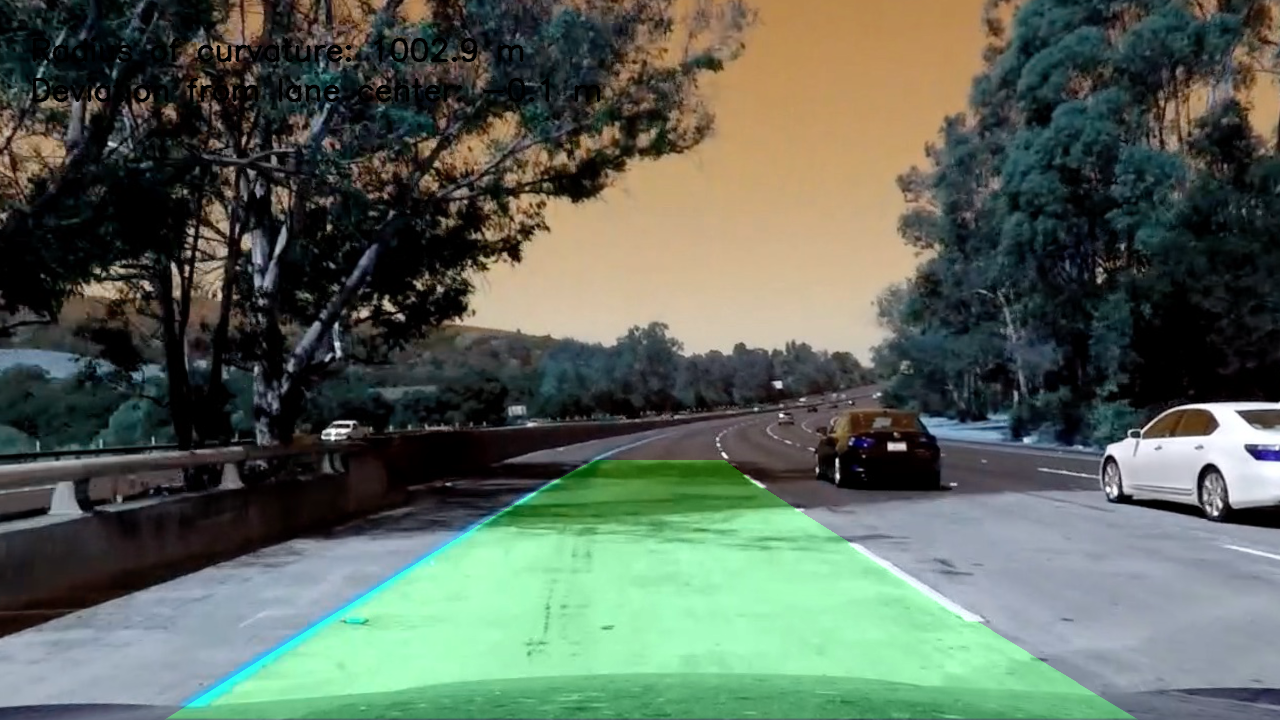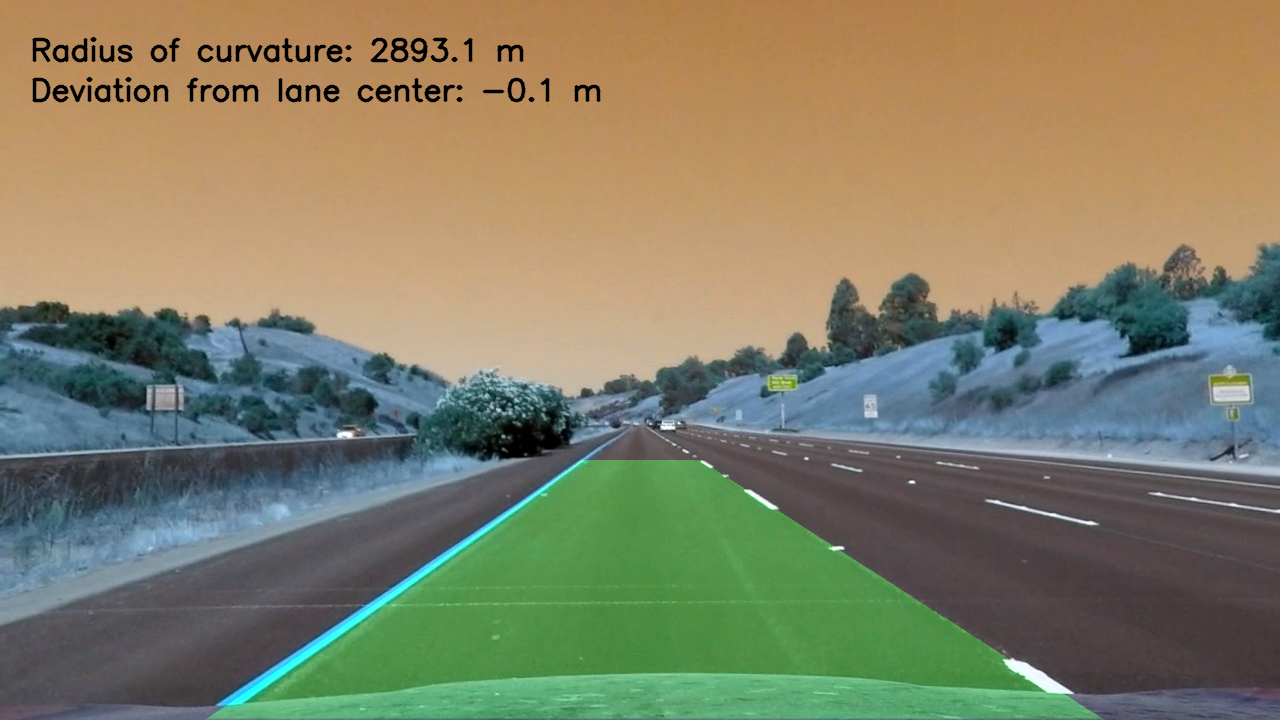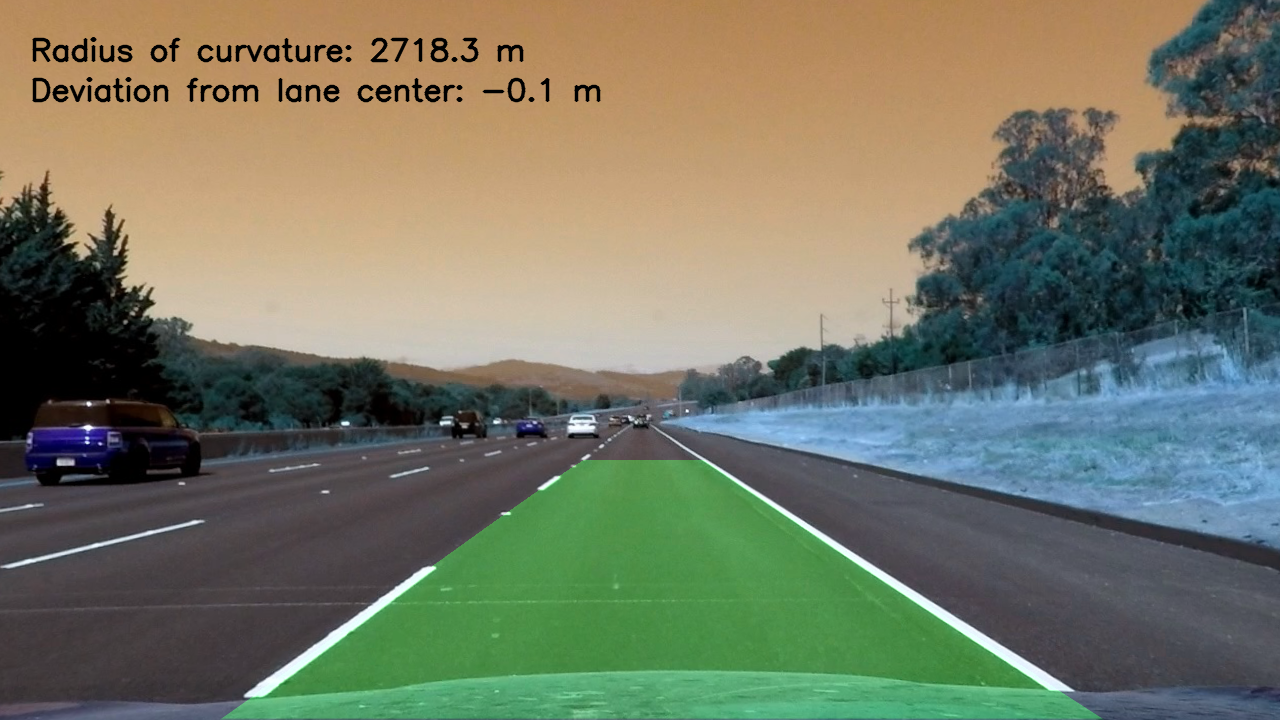Dynamic Results of lanes line detection on the road on the trial track here.
The differents steps of the SW Pipeline are the following :
Step 0 : Compute the camera calibration matrix and distortion coefficients given a set of chessboard images.
Step 5 : Determine the curvature of the lane and vehicle position with respect to center. Warp the detected lane boundaries back onto the original image.
Step 6 : Output visual display of the lane boundaries and numerical estimation of lane curvature and vehicle position.
This part is a generic part (must be not change).
Only a specific part is here present in this generic part:
-
modification of the differents threshold gradient (-x, -x, -mag, -dir) and threshold colors
-
modification of the 3 hyperparameters "window" (pixel analyze)
You can find in the other part named is named SW_Pipeline_Advanced_Lane_Finding.ipynb.
He calls for every stages of the SW pipeline the generic fonctionc impemented in the module CV_funtion.py
The functionnalities "camera calibration" and "distorsion correction" with the chessboards are directly implemented in the CV_function.py for the generic part.
For the specific part, the code is implemented in SW_Pipeline_Advanced_Lane_Finding.ipynb.
The SW design method is very good explains in the code comments.
The functionnality "distorsion correction" is generic and directly implemented in the CV_function.py.
This module is call in SW_Pipeline_Advanced_Lane_Finding.ipynb.
The input are the raw image. The output is the undistorded image.
The functionnality "color transform and gradient thresholding" is generic and directly implemented in the CV_function.py.
The input images are the images after distorsion correction. The output images are the images witht the configured threshold.
A lot of combinaison are possible (colors threshold/gradient-x/gradient-y/gradient direction/gradient magnitude). For this exercice, we used only the x-gradient and the colors transform (L+S Channel,L for the problem of shadow). The others parameters (mag/dir) have not been used.
This step (threshold configuration) costs a long time, because the thresholds are configured manually.
PLease find the 4 images bellow (with x-gradient thresholding alone, with thresholding color (S-Channel) alone, with thresholding color (L-Channel) alone and the combined solution)
The functionnality "perspective transform" is generic and directly implemented in the CV_function.py.
The target is to take 4 points (x,y) very far in the image to make a better analyze and to make a perspective transform.
2 Steps are here useful :
- the lane-line pixels identification and
- the polynomial curve for every lane (right and left)
Two generics functionalities implemented in CV_function.py are here useful :
- the lane-line pixel indentification and
- the polynomial curve for every line.
For information : Blue and Red are the colors for the lane left and the lane right.
To add the two polynomial, these 2 lines are superposed on the plot with the 2 lanes pixels:
- plt.plot(left_fitx, ploty, color='yellow')
- plt.plot(right_fitx, ploty, color='yellow')
Step 5 : Calculation of the radius of curvature of the lane and the position of the vehicle with respect to center
We need 2 generics functionalities implemented in CV_function.py:
Step 1 : radius of curvature : The most important point is the transfert from the "pixel world" to the "real world" (in meters)
Step 2 : position of the vehicule
Here you can find the pipeline with the comment (main programm) and the results for every frame :
####"PIPELINE"#### def process_image(image):
#Step 1 = camera calibration + image undistorted
undist =calculation_undistort(image,objpoints,imgpoints)
#Step 2 = Threshold (gradient (-x/-y/-mag/-dir) and color) configuration and threshold combinaison
_, _, _, _, _, combined_binary,_ = image_computing(undist)
#Step 3 = Perspective Transform, the target is to select 4 points very far in the image foe a better analyze
# This function returns Minv, because he will be use in the Step, in the reconstitution step
warped,Minv = warper(combined_binary, src, dst)
#Step 4 : the target is to know the dedicated pixels for the lane right and the lane left
# the standard method named "peak/histogram" is used (convolution mathod not used) with windows configured with hyperparameters
leftx, lefty, rightx, righty,left_lane_inds, right_lane_inds = find_lanes_pixels(warped)
#Step 5a = polynomial fonction for the right and the left curve
left_fit, right_fit, ploty, left_fitx, right_fitx, out_img= fit_polynomial (warped, leftx, lefty, rightx, righty, left_lane_inds, right_lane_inds)
#Step 5b = Diagnostic information 1 : curvature calculation (space conversion : from "pixel" world to "meters" world)
left_radius_curve,right_radius_curve = calculation_curvature (leftx, lefty, rightx, righty)
#Step 5c = Diagnostic information 2 : deviation of the vehicle with the "central line" reference
vehicle_position = calculation_vehicle_position (undist, left_fit, right_fit)
#Step 6 = Vizualization of the image (before processing) with all the informations (diagnostics + lane detection tracking)
result = vizualization(undist, left_fit, right_fit, Minv, left_radius_curve, left_radius_curve, vehicle_position)
return result

